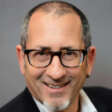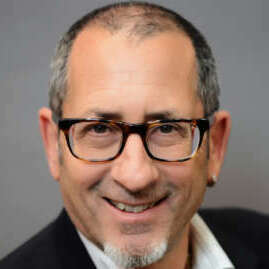CX Exchange 2023: State’s Shannon Cazeau, David Tucker on delivering great employee experience worldwide
The CX team in State’s talent bureau likes to frame experience as “backstage” for employees and “onstage” for customers. We learn from State’s Shann...
At the State Department, an entire bureau trains its attention on improving the work life of employees located at 250 posts around the globe.
In seeking to continually better employee experience, State has framed its efforts around a basic question: “How do we position this global workforce to meet the challenges of the 21st century?” said Shannon Nagy Cazeau, director of policy and coordination in the department’s Bureau of Global Talent Management.
State’s worldwide nature gives it two challenges in doing so. The first — something it shares with the Defense Department — stems from the rolling reassignment of American employees from one country to another. The second arises from the thousands of local foreign nationals that State employs in overseas posts, which creates sensitive, location-specific cultural issues. The desire to maintain the department’s reputation as a good place to work also plays into both of these challenges, Cazeau said.
Cazeau joined David Tucker, a customer experience strategist with GTM, at the Federal News Network 2023 CX Exchange to share details about the bureau’s initiatives to drive improvements in employee experience cohesively yet also region-specific around the world.
Rethinking the State employee experience from end to end
Cazeau described GTM’s job as one of taking care of the department workforce by providing an enabling environment and necessary support services to help State’s broad workforce do their jobs successfully. For that reason, she said, “when we talk about the customer experience, we’ve actually moved it into the employee experience.”
And nothing is off limits in working toward those goals, said David Tucker.
“We’re reimagining services from the ground up,” Tucker said. “We’ve overhauled our intranet to make information more available, more findable, more accessible. We’ve been identifying ways to decrease burden and increase productivity using automation. We also have a few global projects going on right now to enhance support to families across the world.”
The improvement work relies heavily on input from employees themselves too. For example, the department conducted what Cazeau called a “Stay Survey,” asking employees what in their working conditions would motivate them to stay with the department or prompt them to leave. The survey drew a 36% response rate, which made the findings highly projectable to the entire workforce.
What’s more, “we crowdsource solutions,” she said. “We have focus groups. We do a lot of these to understand first where to look.”
The surveys and focus groups help GTM identify “frictions, particular sticky problems,” Cazeau said.
Leaning into data to derive insights and reveal trends
Cazeau and Tucker said employee-identified issues drive the requirements of the GTM customer experience team.
“What our users —our customers — tell us, that’s the data that we’re working with,” Tucker said. He said the team also gathers research data derived from how users interact with applications and deal with online processes.
He cited case management and service desk applications, where the CX team has added Likert Scale questionnaires that gather people’s reactions to a process they’ve just finished, for instance.
“We’re starting to broaden that out to more and more services,” Tucker said. After adjustments, “we do follow-up surveys with people to see if we’ve moved the needle on their sentiment around processes.”
Still more data comes from simply tracking the kinds of help requests that come in.
“We’ve set up processes to organize structured data when it comes in for requests,” he said. “Then, we’re able to do data analysis to inform future actions, future iterations of a policy or future iterations of a service.”
The CX team augments quantitative data with detailed conversations with individuals about specific topics identified in surveys or focus groups. Cazeau said that in one instance, such a discussion uncovered “a totally different approach I had never thought about.” She said the combination of hard data, survey data and dialogue forms the foundation of human-centered design.
That approach also helps individual employees think in terms of how they would solve a process or work life problem. Tucker and Cazeau said that engaging employees in the work improvement process boosts morale, creates positive energy and generates ideas.
A more energized workforce is more apt to find ways to better serve external customers of the department, Cazeau said. She noted that the CX team describes the employee experience work as the “backstage,” where improvement drives “onstage” performance, that is, services delivered to the public.
“If we do a better job taking care of employees’ needs ‘backstage,’ they’re going to in turn do a better job of taking care of the needs of the customers that they’re serving,” Cazeau said.
Modernizing to improve employee retention
Although the external customer experience and employee experience effort have merged organizationally, Cazeau said employee retention remains a special focus under Secretary Antony Blinken’s modernization strategy.
“We established a retention unit to really look at our workforce,” she said. “Who was leaving? Who was staying? What were the reasons they were staying and the reasons they were going?”
Now, customer experience team members sit in on exit interviews “so they can hear that employee feedback on the way out the door,” Cazeau said. In evaluating employee customer experience, bureau staff members consider everything from the quality of specific online processes — such as how long it takes to issue a computer — to broad issues, like an employee’s sense of well-being.
“The retention piece looks holistically at the employee experience,” she said. The CX team evaluates daily administration burdens in a larger context. For instance, someone recently transferred to a new country will need to worry about credentials, equipment, delivery of household items — in addition to actual work and family matters.
“What employees are focused on is how much time in my day am I spending on my core work that I’ve been sent to do versus trying to get my kids set up in school, or get my vehicle out of customs, or whatever,” she said. “If our employees feel like that administrative burden is diminishing, then that’s reflective of these broader efforts.”
In some parts of the State Department, Cazeau and Tucker said, workloads are on the rise, and State, like all agencies, can’t hire unlimited numbers of people. That’s why the CX group and the GTM Bureau itself place a high priority on improving technology applications that aid productivity.
Cazeau cited logistics, security clearances, applications for new job posts and acquisition approvals as targets for digital transformation. Often, the search for solutions begins locally, in her bureau itself.
“When we talk about workload, what we’ve talked about is: How could we look at it even in our own work processes within the Bureau of Global Talent Management and innovate some efficiencies there?” she said. “And then model that to other parts of the institution who are looking for solutions.”
Shared solutions can save time and effort, while helping ensure improvement of a process in one place doesn’t add burden elsewhere, Cazeau said.
To read or watch other sessions on demand, go to our 2023 CX Exchange event page.
Copyright © 2024 Federal News Network. All rights reserved. This website is not intended for users located within the European Economic Area.
Related Stories
In final pitch, O’Malley highlights ‘deep concerns’ for SSA before his resignation next week
Featured speakers
-

Shannon Nagy Cazeau
Director of Policy and Coordination, Bureau of Global Talent Management, State Department
-

David Tucker
Customer Experience Strategist, Bureau of Global Talent Management, State Department
-

Tom Temin
Host, The Federal Drive
Upcoming Events
Related Stories
Top Stories

Shannon Nagy Cazeau
Director of Policy and Coordination, Bureau of Global Talent Management, State Department
A career Foreign Service Officer since 2001, Shannon Nagy Cazeau is currently the Director of Policy Coordination in the Bureau of Global Talent Management where she is leading a wide range of human resource policy reform efforts and developing the Department’s first Strategic Plan for Retention. Previously, she worked in the Bureau for Intelligence and Research (INR) from 2020 to 2022 as the Director of Information and Analysis for Africa, and from 2018 to 2020, served as the Deputy Chief of Mission in Ouagadougou, a period marked by the steady expansion of violent extremism and insecurity across the Sahel region of West Africa.
From 2015 to 2018, Ms. Cazeau served at the United States Africa Command as the Senior Foreign Policy Advisor to the Director of the J5 Strategy, Programs, and Plans Directorate where she focused on strengthening partnership and collaboration between the US Departments of State and Defense on shared priorities. Ms. Cazeau’s other Foreign Service assignments include Counselor for Political and Economic Affairs in Addis Ababa, Ethiopia from 2012 to 2015; Deputy Director of the Office of Economic Policy Staff in the US State Department’s Bureau of African Affairs from 2010 to 2012; Desk Officer for the Republic of Guinea in 2010; Political/Economic Section Chief in Conakry, Guinea from 2007 to 2009; Trade and Investment Officer in the Philippines in 2006; Vice Consul in the Philippines in 2005; and General Services Officer in Benin from 2002 to 2004.
Ms. Cazeau has a master’s degree in Public and International Affairs from the University of Pittsburgh and a bachelor’s degree in Political Science from the University of Alaska in Fairbanks. She is fluent in French and has studied Russian and German. Ms. Cazeau is married and has two children.

David Tucker
Customer Experience Strategist, Bureau of Global Talent Management, State Department

Tom Temin
Host, The Federal Drive
Tom Temin has been the host of the Federal Drive since 2006 and has been reporting on technology markets for more than 30 years. Prior to joining Federal News Network, Tom was a long-serving editor-in-chief of Government Computer News and Washington Technology magazines. Tom also contributes a regular column on government information technology.






